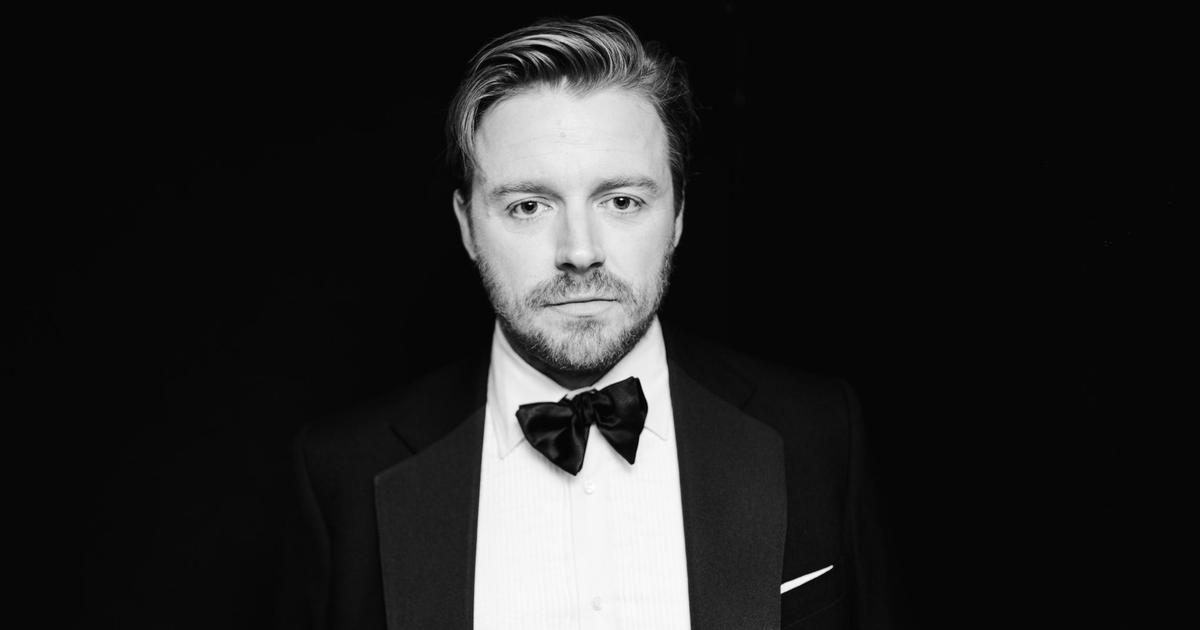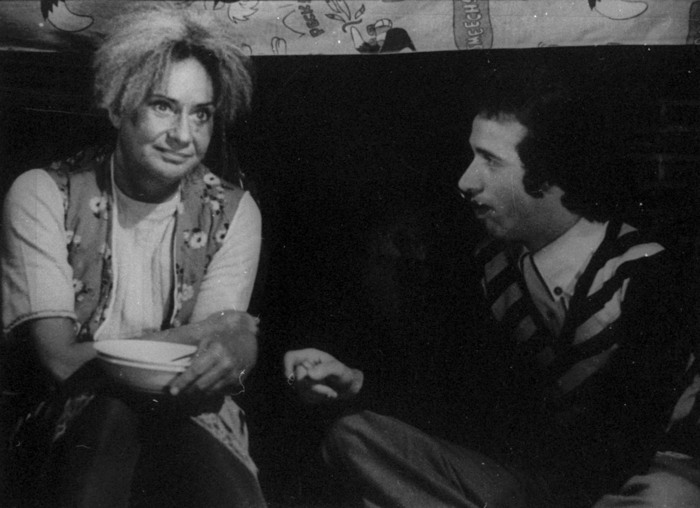Since Boris Mikhailov (Kharkov, Ukraine, 1938) picked up a camera for the first time in 1966, he has done nothing but break rules.
Subvert and play with the visual and non-visual codes of the Soviet era in order, through its irreverence, to navigate between documentary, conceptual and
performance
photography , making use of different techniques that rethink the photographic image itself.
The skill of the author when it comes to taking the pulse of what is hidden under the shell of reality and reaching its abyss from deeply vitalist postulates has led him to be recognized as one of the most influential contemporary artists in Eastern Europe. .
The European House of Photography in Paris (Maison Européenne de la Photographie, MEP) launches
Boris Mikhailov, Ukrainian Diary,
the most important retrospective to date on the figure of the Ukrainian iconoclast.
From the series 'Red', 1968-1975.BORIS MIKHAILOV, VG BILD-KUNST, BONN.
TATE.
ACQUIRED WITH THE SUPPORT OF THE ART FUND (WITH CONTRIBUTION FROM THE WOLFSON FOUNDATION) AND KONSTANTIN GRIGORISHIN, 2011.
From the series 'Black Archive', 1968-1979.BORIS MIKHAILOV / VG BILD-KUNST, BONN.
COURTESY GALERIE SUZANNE TARASIÈVE, PARIS.
From the series 'At Dusk', 1993BORIS MIKHAILOV / VG BILD-KUNST, BONN.
COURTESY GALERIE SUZANNE TARASIÈVE, PARIS.
From the series 'National Hero', 1975.BORIS MIKHAILOV / VG BILD-KUNST
From the series 'Salt Lake', 1986. Boris Mikhaïlov / VG Bild-Kunst;
Bonn. Courtesy Galerie Suzanne Tarasiève;
Paris.
From the series 'Crimean Snobbism ', 1982.BORIS MIKHAILOV, VG BILD-KUNST, BONN.
TATE.
From the series 'The Theater of War, Second Act, Time Out', 2013.BORIS MIKHAILOV / VG BILD-KUNST, BONN.
COURTESY GALERIE SUZANNE TARASIÈVE, PARIS.
From the series 'Case History', 1997-98.BORIS MIKHAILOV / VG BILD-KUNST, BONN.
COURTESY GALERIE SUZANNE TARASIÈVE, PARIS.
From the series 'Dance', 1978.BORIS MIKHAILOV / VG BILD-KUNST, BONN.
COURTESY GALERIE SUZANNE TARASIÈVE, PARIS.
From the series 'Yesterday's Sandwich', 1966-68.BORIS MIKHAILOV / VG BILD-KUNST, BONN.
COURTESY GALERIE SUZANNE TARASIÈVE, PARIS.
Despite being scheduled long before the war broke out, the exhibition takes place within the dramatic context of war.
A coincidence that is extremely pertinent since at its core beats the accumulated suffering and the oppression and control exercised over a people throughout the last century.
A reminder of the rich history, boundless resilience and courage of the Ukrainians.
“The exhibition celebrates the lives of people who continually show us the meaning of survival and triumph over adversity through the eyes of one of its most sensitive and original witnesses”, highlights Simon Baker, director of the MEP .
The exhibition coincides with the publication of
Boris Mikhailov.
From “blue horse” till now days 1965-2022
,
which brings together 27 of the projects carried out by the artist over almost six decades.
A tour where humor goes hand in hand with tragedy, whose title alludes to a group of students from Kharkov known as
Blue Horse.
Its members were tried in the early 1960s for violating the moral codes of Soviet society by succumbing to "inappropriate" Western influence.
In those days “the city was full of rumors about rock & roll, the Beatles, parties and debauchery”, describes the photographer.
Sentenced and imprisoned, the main evidence against the rebels consisted of a batch of personal photographs marked with court notes that warned of "life, youth and pleasure."
They were taken at the time when the author himself was taking his first steps with the camera.
A time that he describes as “the beginning of the sensual perception of the world through photography”.
Mikhailov had started filming a documentary about the factory where he worked as an engineer when the KGB discovered that he was using the lab to reveal nudity.
He was accused of engaging in pornography and lost his job.
“The task of a photographer is always to find the subtle and vague border between what is permitted and what is prohibited.
The border changes constantly, like life itself”, writes the author.
From the series 'Crimean Snobbism ', 1982.BORIS MIKHAILOV, VG BILD-KUNST, BONN.
TATE.
In Mikhailov's 'diaries' his hometown, Kharkiv, serves as the background for many of his series.
He will say that the constructivist building where he was born was his first art teacher.
Apart from such a strong mentor, nothing in the town influenced him.
The limited cultural traditions of the city placed him in "a state of total openness", in that state longed for by every artist.
"I think that vulgarity is one of the particular characteristics of the place," he acknowledged in an interview with Viktor Misiano published in Aperture
magazine .
.
“It doesn't have a cultural tradition, but it does have energy and ambition.
And in a certain sense that vulgarity can even be considered revolutionary”.
It is in this environment, stimulated by his eagerness for the experimental, where the poor and the damaged cease to be an inconvenience to become an essential artistic tool for the photographer.
There, due to an oversight, he discovers the fascination produced by superimposing negatives, the "random assemblages that reflect the duality and contradictions of Soviet society", elements that will shape
Yesterday's Sandwich
, the artist's first photographic series.
Throughout his career, Mikhailov delved into both the formal and aesthetic aspects of the medium "as well as the sociopolitical usefulness of the photographic image when it comes to reframing the world in which he lives," Baker points out.
Neither when portraying Soviet-era Ukraine, nor when portraying those same spaces and places during and after the collapse of the regime, nor when dealing with matters of life and death, does he allow himself the luxury of emotional distance, often associated with attempts to document societies through images.
"Her heart of him is at the center of his descriptions of both his own life and the lives of others," notes Baker.
In
Black Archive
(1968-1979)
the author set out to “shoot supposedly bad things in supposedly wrong ways”.
Going against the imaginary of social realism became a priority for him.
It was then that he began the search for the "anonymous" and "average" citizen as opposed to the Soviet hero, documenting scenes of everyday life, taken clandestinely in public spaces and deliberately blurred, without contrast or defective.
In
Red (1968-1975)
the photographer will bring together images where red is clearly associated with Soviet symbology as a way of pointing out the extent to which communist ideology permeated all aspects of life.
From the series 'Black Archive', 1968-1979.BORIS MIKHAILOV / VG BILD-KUNST, BONN.
COURTESY GALERIE SUZANNE TARASIÈVE, PARIS.
His life that he turned into a "struggle to break with the narrow forms that were being imposed on him from the outside," the author acknowledged.
But if something distinguishes Mikhailov's artistic work, it is his ability to interfere in life to play with it, resorting, when necessary, to exaggeration or absurdity.
As he does in
Crimean Snobbisms
(1988) where he is photographed with his friends playing at being rich and bourgeois.
Or in
I Am Not I (1992)
where he self-portraits naked, parodying idealized male stereotypes.
His work has been compared to the novels of the dissident Limonov in terms of its autobiographical and confessional component.
Both deal with intimate experiences and include elements of transgression while mixing performance with social practices.
“We are both worried about neglecting aesthetics and outer beauty.
The most important thing for us is not external appearances but the most intimate depths of life and humanity”, admits the photographer.
“Why do we have the right to photograph others?
And who are you?
That is why I began to photograph myself, suggesting in these images an answer to my own question”.
Case History (1997-98)
is the artist's most controversial series.
It is the crude and sympathetic, and at times grotesque, portrait of those made homeless by the rise of the capitalist oligarchy after the collapse of the Soviet regime.
Transgressing the codes of photojournalism, the author would pay his models.
He often took them to his home where he offered them food and a bath in exchange for a perch.
“It was not possible to use the old documentary methods.
It was necessary to find new methods to show life and reveal its depths”, argued the photographer.
Temptation of Death (2018-2021)
is his latest series.
It consists of more than 150 diptychs in which images from the past are combined with new photographs taken inside a huge unfinished crematorium, which began to be built in kyiv during the Soviet era.
A dialogue about the past and the present, where all the elements that shape the rich and deep universe of the artist appear again;
repression, transformation, fragility and mortality, but also hope and life.
Since the invasion of Ukraine began, Mikhailov has not been able to return to Kharkov.
Together with Vita, his wife, his family and his refugee friends, he awaits his return to his country, installed in Berlin.
'
Boris Mikhailov.
Ukrainian Diary
'.
MEP.
Paris.
Until January 15, 2023.
'
Boris Mikhailov.
From "blue horse" till now days 1965-2022
′.
Morel Books.
576 pages.
53 euros.
You can follow BABELIA on
and
, or sign up here to receive
our weekly newsletter
.
Subscribe to continue reading
read without limits
Keep reading
I'm already a subscriber















